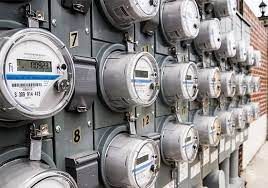Malcolm Turnbull’s deal with gas exporters last year appears to have addressed the gas supply crisis with more gas now being made available in Australia for domestic industry. At first glance, this is much needed relief from high energy costs and may help to achieve energy savings in factories.
“The latest gas market update from the ACCC confirms that the gas crisis has shifted down a gear since early 2017, but it also confirms that we are still far from affordable energy.” said the Australian Industry Group Chief Executive Innes Willox in a media release.
“More supply is clearly being made available in the aftermath of the Prime Minister’s deal with the gas exporters, and the prospect of a supply crunch in 2018 and 2019 is receding. This is an important advance – we are unlikely to see an absolute shortage of gas supply leading to industry closures or power generator shut downs.”
It’s a welcome sign that may yet stifle the volatility and soaring gas prices that has vexed Australian industry with high energy costs and put many struggling manufacturer’s out of business.
However, while the retail gas prices facing industry have clearly fallen from the extraordinary highs of February, they remain twice to three times their historic average.
Prices still seem to be well above export parity.
“We are hopeful that as new gas supply agreements work their way through, prices will fall further…But the new normal will still be uncomfortably high for the foreseeable future for many of Australia’s foundational industries. This challenge is not going away,” Mr Willox said.
What can industry do about high energy costs and gas supply crisis?
“As industry chugs along under the burden of elevated energy costs resulting from the gas supply crisis, manufacturers and other large energy users should do whatever they can in their own environments to operate highly energy-efficient facilities” said Chief Operating Officer at Ecosave, Robin Archibald.
“Whether or not the gas supply crisis has truly been averted, the fact remains that energy costs are a significant line item in the operations budget for any manufacturer. While government and industry leaders debate on how the gas supply crisis should be dealt with, manufacturers must embrace any means necessary to keep their utility costs down.” said Mr. Archibald.
Energy savings in factories, food and beverage manufacturers and other large industrial sites
There are a host of energy conservation measures, that when implemented in best practice energy efficiency projects, could generate between 30% – 60% of energy savings in factories and industrial sites.
- LED lighting
- Rooftop Solar PV sytems
- Heating, Ventilation, Air-Conditioning system optimisations and upgrades
- Refrigeration systems’ upgrades
- Upgraded Boilers and Chillers
- Mechanical and electrical controls
- Sensors
- Variable Speed Drives
- Power factor correction, voltage regulation
- Building insulation / sealing.
- Energy analytics software
- Water amenities, pumping and treatment
- Co-generation and Tri-generation systems
These among many other ECMs are proven ways to significantly reduce high energy costs and create energy savings in factories and other facilities that have extensive energy requirements.
The design and implementation of these ECMs are critical and requires substantial amounts of resources – both technical and financial – to ensure a satisfactory outcome for all concerned.
Mr Archibald went on further to say that large energy users should look to a Tier 1 provider of best practice energy efficiency projects that can offer fixed pricing for end-to-end solutions and delivery of guaranteed energy savings.
“It’s vital to take a performance-based approach to energy efficiency and make sure the project achieves the necessary outcomes. Working with a single point of contact provider that can design and implement the solutions at a fixed-fee and guarantee the savings has major appeal to organisations that want accountability and assurance they will get a return on their investment.”
The benefits of energy efficiency projects include significant energy savings in terms of reduced energy consumption and maintenance costs as well as future cost avoidance of upgrading end-of-life equipment. Combining energy saving initiatives and blending equipment that have shorter paybacks with big ticket items that have longer paybacks provides a financially viable opportunity to do extensive capital upgrades while at the same time realising energy savings in factories and industrial facilities.
There are several ways to fund an energy efficiency retrofit project, but for manufacturing companies that don’t have the capital budget or flexibility for debt financing to fund these best practice energy efficiency projects, there is a revolutionary model of delivering energy and water savings. It’s called the Ecosave Services Agreement™ (ESA) whereby all capital upgrades are funded by Ecosave with no debt or capital outlay required (i.e. off-balance-sheet); ongoing energy efficiency services are delivered as part of a long term agreement (typically 7-15 years) to achieve a guaranteed savings outcome. The energy savings are typically engineered to be more than the ESA service fee which means the upgrades are cash-flow positive.
The ESA can generate energy savings in factories, warehousing and distribution centres as well as commercial buildings and large format retail properties.
Click here to read more information about how the ESA works.
Want to reduce your energy spend but don’t know where to start? Talk to the energy efficiency experts at Ecosave now.





